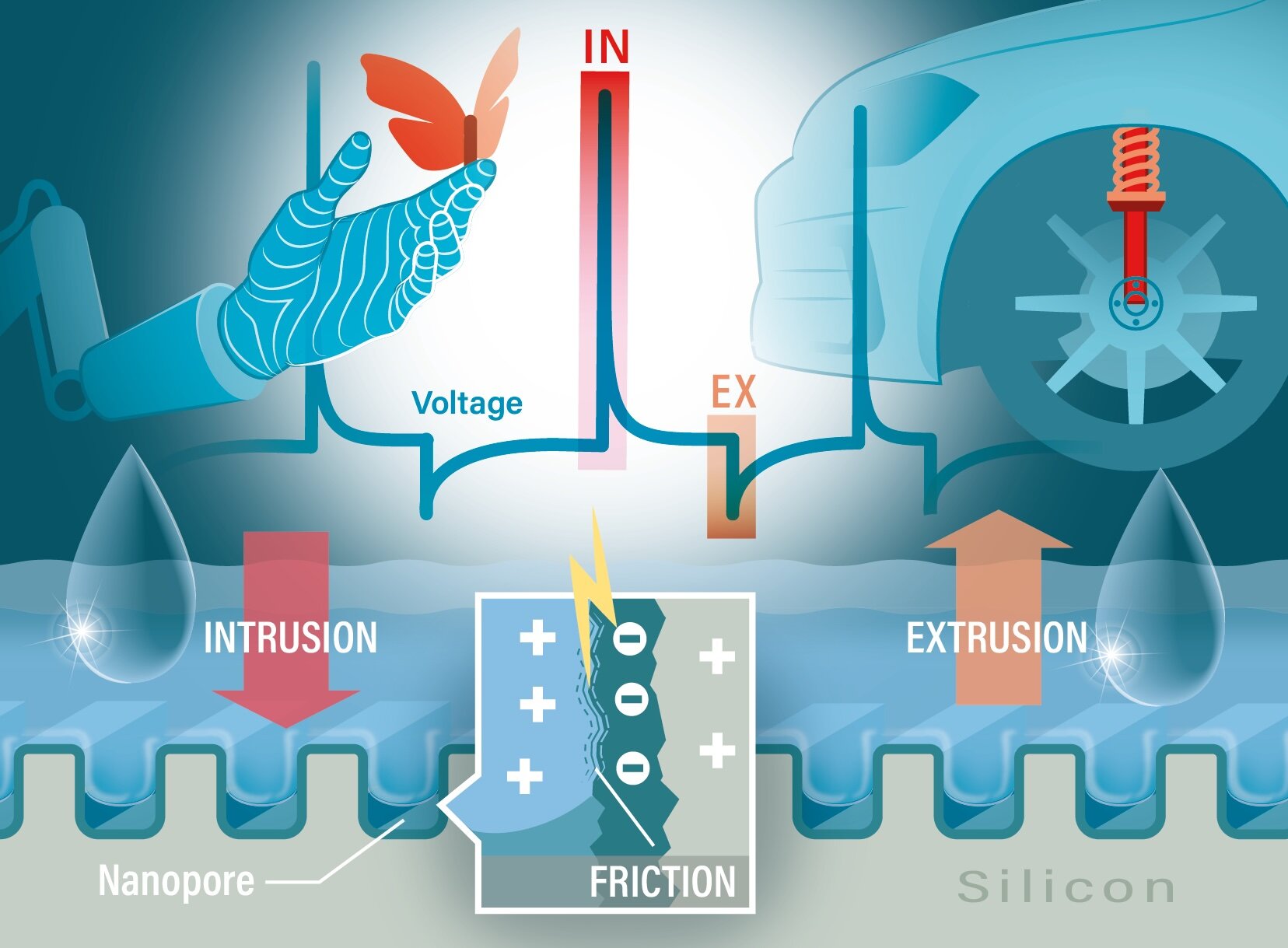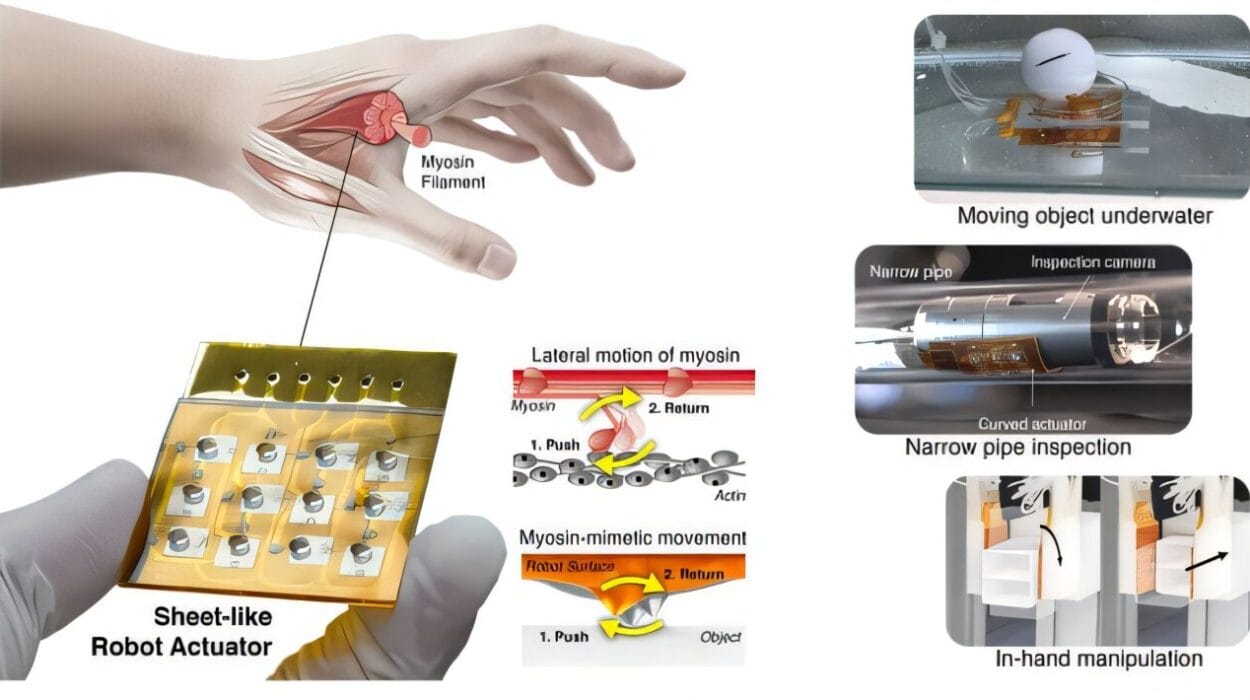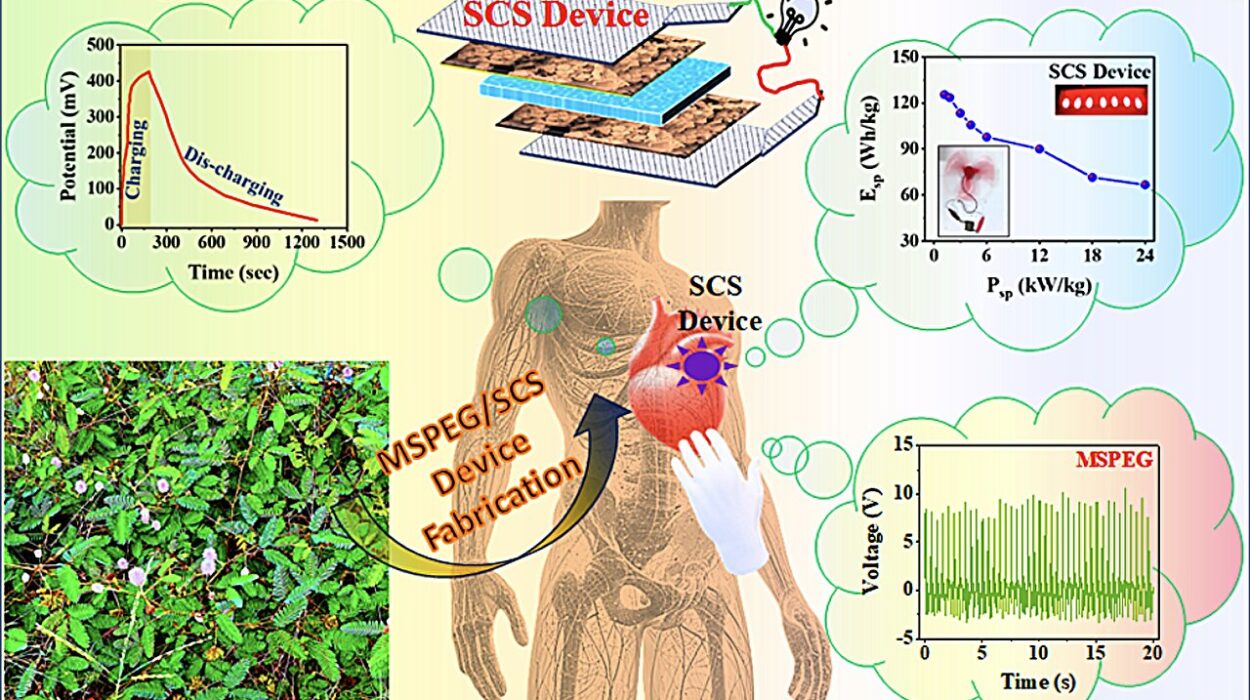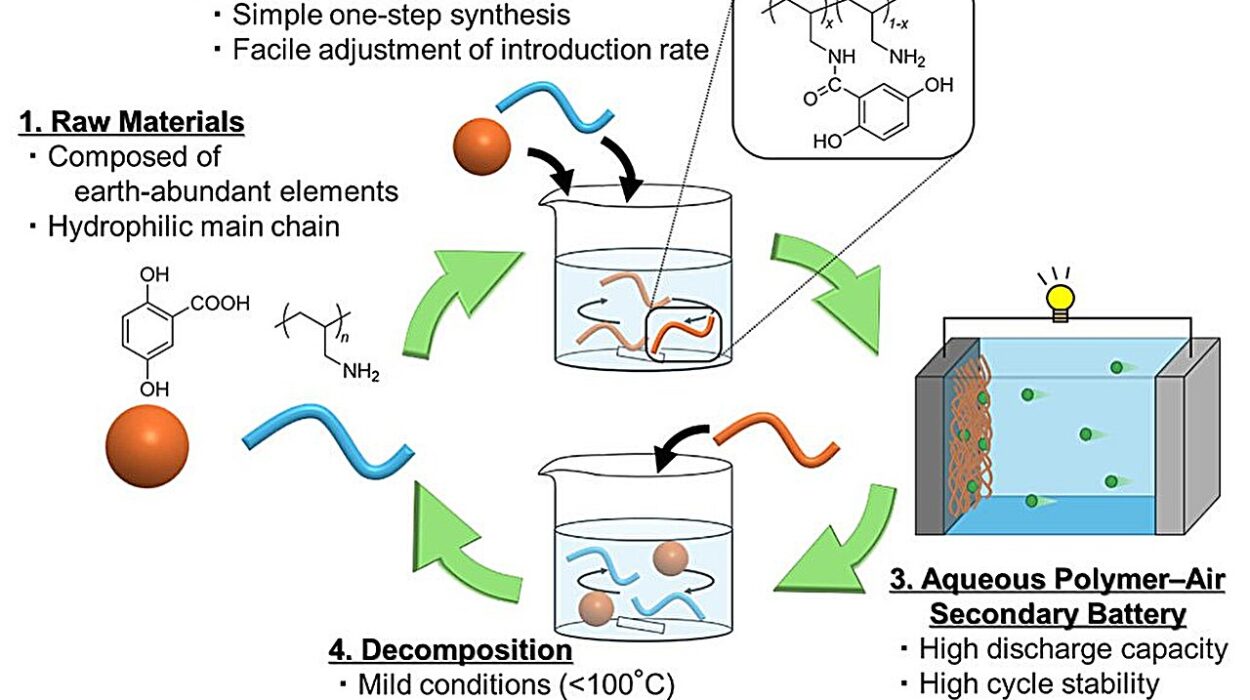Most of the devices around us depend on electricity that has been generated at a distant power plant, transmitted across cables, and then transformed again inside electronics. But what if energy could be produced right where it is needed — silently, cleanly, and using nothing more exotic than water and the world’s most common semiconductor? A team of European scientists has demonstrated exactly this possibility: a new method for turning mechanical motion into electrical energy using water trapped inside nanometer-sized pores etched into silicon.
The work, carried out by researchers in Germany, Spain, Italy, Poland, and Latvia, shows that when pressure pushes water in and out of microscopic pores in specially engineered silicon, electricity is generated at the interface where the solid and liquid meet. The discovery points toward a radically simple idea: motion plus water plus nano-engineering can become a tiny, self-sustaining power source — no batteries, no heavy metals, no rare materials.
Friction at the Smallest Scales Becomes Electricity
The device used in the study is called an Intrusion–Extrusion Triboelectric Nanogenerator, or IE-TENG. Its operation resembles an everyday experience: walk across a plastic carpet, touch a doorknob, and a miniature lightning bolt leaps from your fingertip. That spark is triboelectricity — electricity from friction and contact between different materials. In the IE-TENG, water acts as one material and nanoporous silicon as the other. When pressure cycles force water into and out of the pores, electrical charges build up and are released in a controlled way.
What makes this work remarkable is its simplicity: just water and silicon. In the reported tests, the device reached an energy conversion efficiency of up to nine percent — one of the highest levels ever achieved for systems that rely on solid-liquid motion at the nanoscale. It proves that under the right conditions, even pure water confined in nanostructures can act as an active energy agent.
Silicon, Water, and the Power of Materials Design
The secret is not only the materials themselves but how they are shaped. The team created silicon structures that are conductive, nanostructured, and intentionally water-repellent. This combination sounds contradictory — something that resists water but must interact with it — yet it is exactly what lets the researchers control how water invades and leaves the pores in each cycle. Because the architecture is engineered down to the nanometer, the motion of water becomes predictable and repeatable, turning a chaotic phenomenon into a reliable power-producing process.
The researchers stress that their approach avoids exotic or toxic materials. It relies on silicon — the backbone of the electronics world — and water, the most abundant and safest fluid on the planet. In an age when modern electronics depend on scarce mined metals and energy-hungry factories, the move toward gentle and abundant ingredients is not only a scientific triumph but an ethical and environmental one.
Machines That Run Themselves
The implications of this technology reach far beyond laboratories. Devices that can generate their own electricity from surrounding motion could transform how we power sensors, textiles, medical wearables, and robotics. Imagine a running shoe whose cushioning generates electricity to power health monitors, or a soft robotic hand in which the movement of its grip directly generates signals without a wired power source. Smart clothing could harvest the motion of the body. Water sensors could monitor pipelines or coastlines indefinitely without batteries. Robots could “feel” touch through self-powered haptic skins.
Unlike batteries, which deplete, leak, and pollute, a device based on water inside robust silicon pores could run for years with no maintenance, no charging, and little cost.
The Dawn of Water-Driven Electronics
This research is part of a broader movement to build technologies that collaborate with natural physics instead of fighting against it. Just as wind and sunlight have reinvented the generation of large-scale electrical power, water and nano-engineered materials may reshape how micro-scale energy is created on demand. The authors of the study describe their work as the beginning of a new class of self-sustaining materials — systems that generate their own signals from the motions and conditions they experience.
In a world where billions of tiny devices are being added each year to our homes, factories, oceans, and even our bodies, finding ways to power them without burning fuel or burying landfills in batteries is not merely convenient — it is necessary. The ability to turn a droplet of water squeezed through a nanopore into usable electricity is more than an elegant scientific trick. It is a glimpse of an engineering future that remembers the most important rule of nature: the simplest ingredients, designed with intelligence, can do astonishing things.
More information: Luis Bartolomé et al, Triboelectrification during non-wetting liquids intrusion–extrusion in hydrophobic nanoporous silicon monoliths, Nano Energy (2025). DOI: 10.1016/j.nanoen.2025.111488






